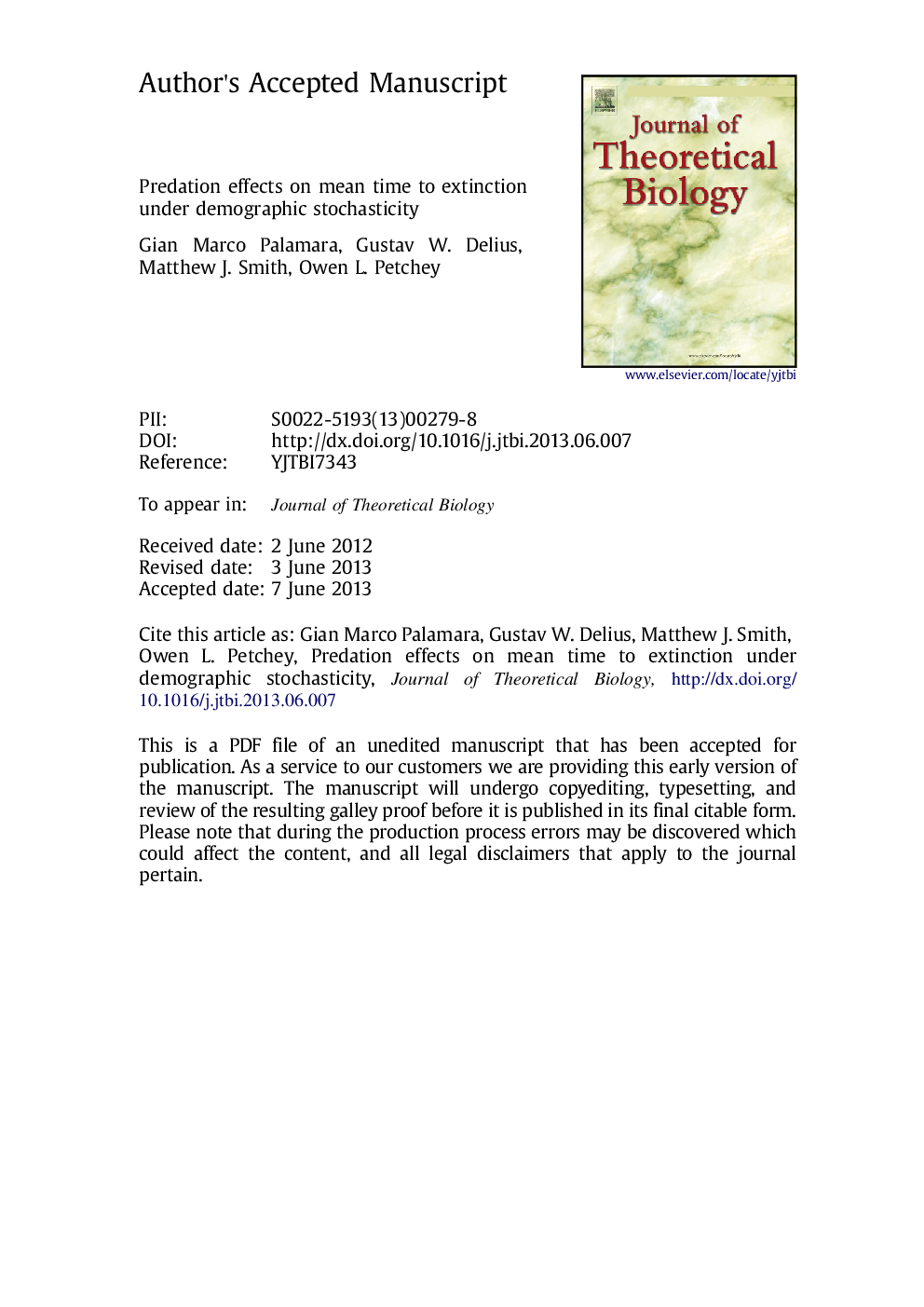| Article ID | Journal | Published Year | Pages | File Type |
|---|---|---|---|---|
| 6370854 | Journal of Theoretical Biology | 2013 | 20 Pages |
Abstract
Methods for predicting the probability and timing of a species' extinction are typically based on single species population dynamics. Assessments of extinction risk often lack effects of interspecific interactions. We study a birth and death process in which the death rate includes an effect of predation. Predation is included via a general nonlinear expression for the functional response of predation to prey density. We investigate the effects of the foraging parameters (e.g. attack rate and handling time) on the mean time to extinction. Mean time to extinction varies by orders of magnitude when we alter the foraging parameters, even when we exclude the effects of these parameters on the equilibrium population size. Conclusions are robust to assumptions about initial conditions and variable predator abundance. These findings clearly show that accounting for the nature of interspecific interactions is likely to be critically important when estimating extinction risk.
Related Topics
Life Sciences
Agricultural and Biological Sciences
Agricultural and Biological Sciences (General)
Authors
Gian Marco Palamara, Gustav W. Delius, Matthew J. Smith, Owen L. Petchey,
